Insect Wall Exhibit
Goliath Bird Eating Tarantula
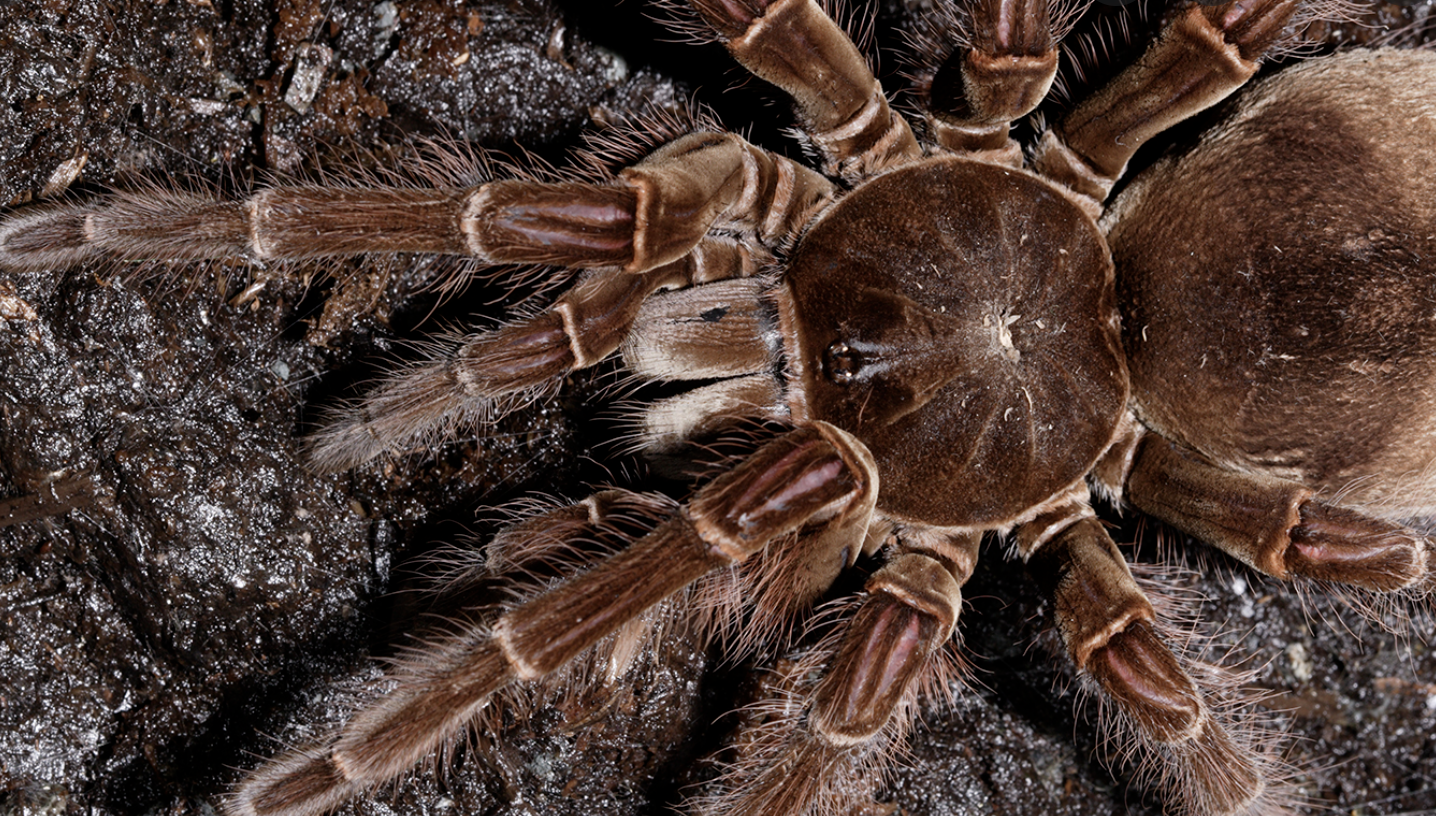
Diet: Carnivore including arthropods, worms and amphibians
Leg Span: Up to 12 inches
Body Length: Up to 5.1 inches
Weight: Up to 6.2 ounces
Life Span: 3-6 years
Goliath Bird Eating Tarantulas rarely actually prey on birds. Rather they prefer arthropods, worms and amphibians. However, because of their large size and opportunistic predatory behavior, they will prey on a variety of insects, small rodents, frogs, lizards and even snakes. These tarantulas will drag their prey back to their burrow and begin the digesting process which consists of liquefying the insides of the prey and sucking them dry.
The Goliath Bird Eater is an edible spider and is part of the local cuisine in South America. The people there will sing off the urticating’s hairs and roast them on banana leaves. The flavor has been described as “shrimp-like.”
Giant African Millipede
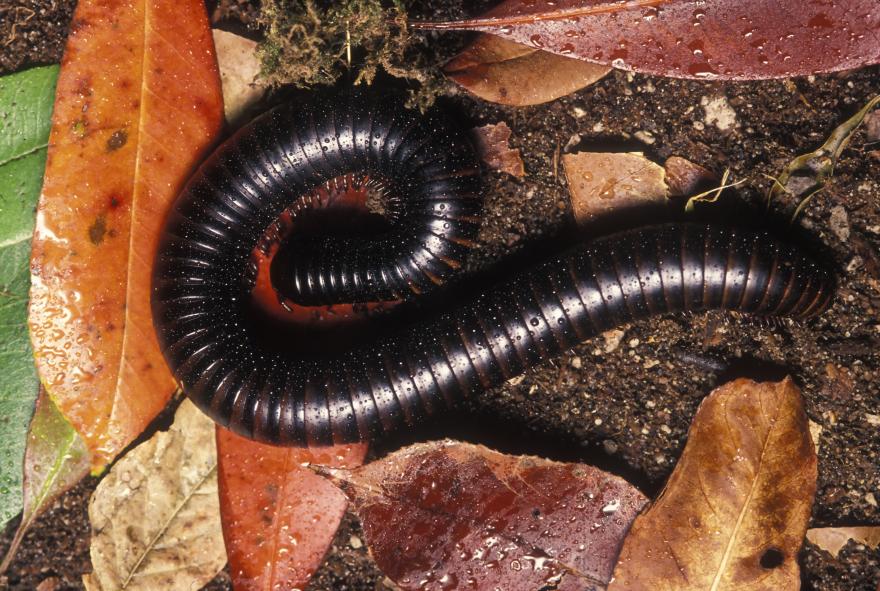
Range: Western Africa
Diet: Detritivore including decaying trees, logs, and plants
Size: 4-12 inches
Life Span: 5-7 years
The name millipede means “thousand-feet” however most Giant African Millipedes only have about 300-400 legs. These guys are the largest of the 10,000 species of millipede.
Giant African Millipedes are a large arthropod classified by a segmented body, an exoskeleton, and many legs! They have four legs per body segment and every time that they molt, one more segment with four legs are added. Each segment has two pairs of internal organs. Instead of breathing with lungs, millipedes have pore-like holes that are located down the length of their body called spiracles. Unfortunately if the millipede gets too wet, it could potentially drown.
Vietnamese Stick Bugs

Range: Vietnam
Diet: Herbivore
Size: Up to 6 inches
Life Span: 5-7 years
There are more than 3000 species of walking stick bugs all over the world and in diverse climates. However, they do not all look alike because they evolve to look like the twigs or branches that are around them. Stick bugs look like sticks so that they can graze on leaves peacefully without too much predation.
In captivity there are only female stick insects and we’re not even sure that males exist even in nature. Females reproduce parthenogenically, meaning that they lay eggs that will hatch without being fertilized. All these babies will also be female.
They are most active in the evening and night time. When they walk, they do so in a wobbly or shaking fashion to look more like a twig that is moving in the wind.
Vinegaroon

Range: United States, Africa, northern South America, the Caribbean, Central America, Asia
Diet: Omnivore including insects, spiders, amphibians and slugs
Weight: 0.44 ounces
Size: 1-3.3 inches
Life Span: 7 years
Vinegaroons are nonvenomous and as their defense mechanism, they use the spray technique where they spray a combination of caprylic acid and acetic acid that gives out a pungent odor. These insects are calm in nature and lead a solitary, unperturbed, and peaceful life (even during the breeding season). They do not form colonies and even the males and females live separately. They are adept enough to fend for themselves in the wilderness.
In Harry Potter and the Goblet of Fire, this is the insect that Professor Moody demonstrates to the students the Forbidden Curses.
Tanzanian Tailless Whip Scorpion

Range: Central Africa
Diet: Insects
Size: 8 inches
Life Span: 10-15 years
Most of these species have 8 eyes. They have the pair of eyes in the front of the body and two smaller clusters of 3 eyes further back on the body on each side. They have 8 legs but the first pair of legs act more like sensory organs and not used for walking. These sensory organs have many sensory receptors and can extend to several times the length of the body. The other 6 legs they use for walking in a crab-like motion.
Blue Death-Feigning Beetles
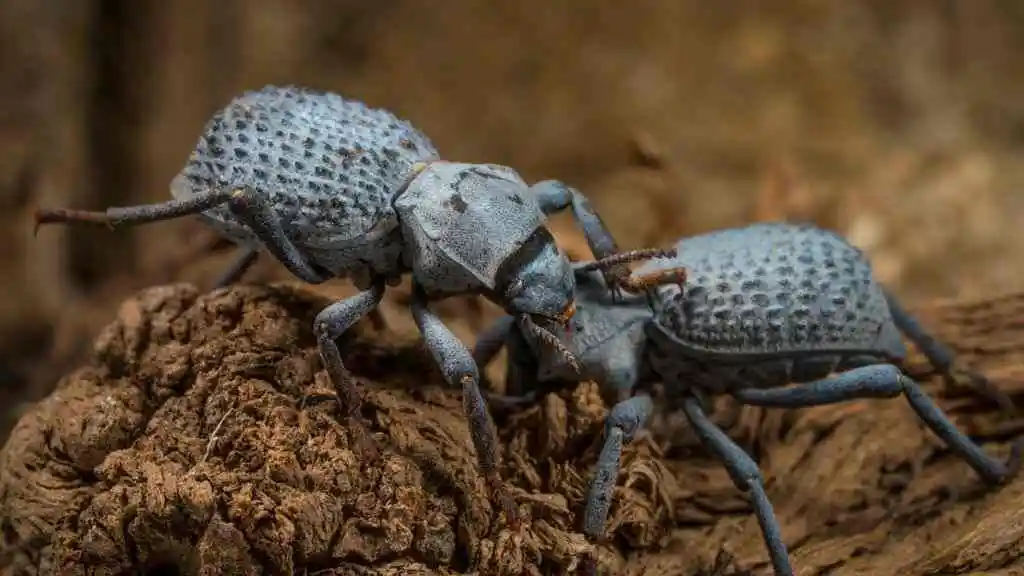
Range: Southwestern United States
Diet: Omnivore
Size: 0.7-0.8 inches
Life Span: 8 years
The Blue Death-Feigning Beetle gets its bluish tint from a wax that it secretes to protect itself against over-heating and dehydration. It also gets its name from its defense mechanism, by rolling over unto their backs and playing dead.
They cannot fly because their wings are fused to their exoskeleton. They also cannot climb vertical smooth walls since they don’t have tarsal pads on their feet.
Emperor Scorpion

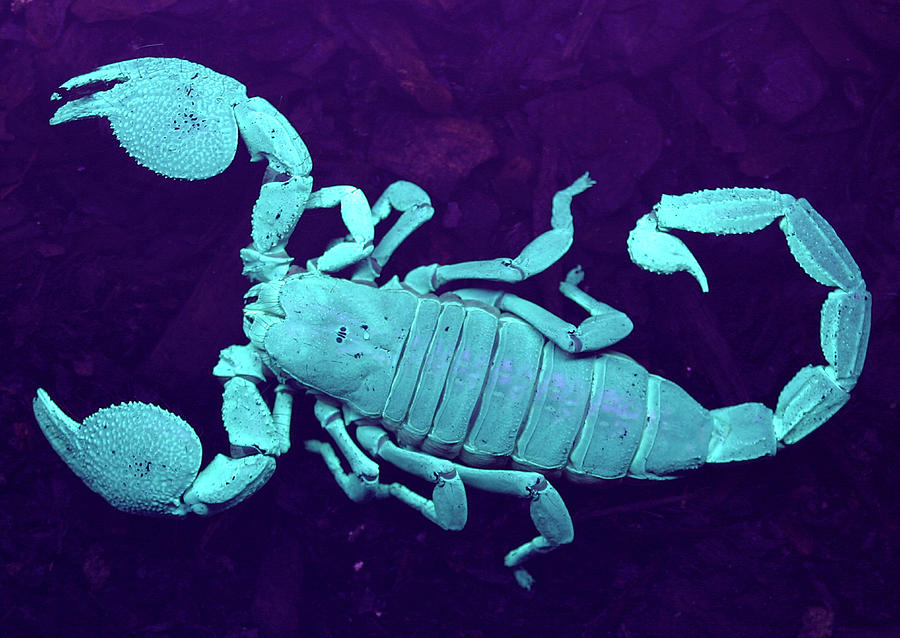
Range: West Africa
Diet: Carnivore
Weight: Up to 30 grams
Size: Up to 8 inches
Life Span: 6-8 years
Scorpion stings can be mild to severe depending on the species and the humans allergic reaction to it. The tip of their tail contains the venom gland and the stinger. However, as adults, the scorpions do not use their tail for defense but would rather use their pincers to crush and dismember their prey.
Their Exoskeleton is very sclerotic which causes them to have a metallic greenish-black color and makes them fluorescent greenish-blue under the ultra-violet light.
Emperor Scoprions are able to detect their prey through the vibrations in the air and ground. Emperor Scorpions burrow underground and even in termite mounds up to 6 feet deep in order to hunt prey.
Madagascar Hissing Cockroaches
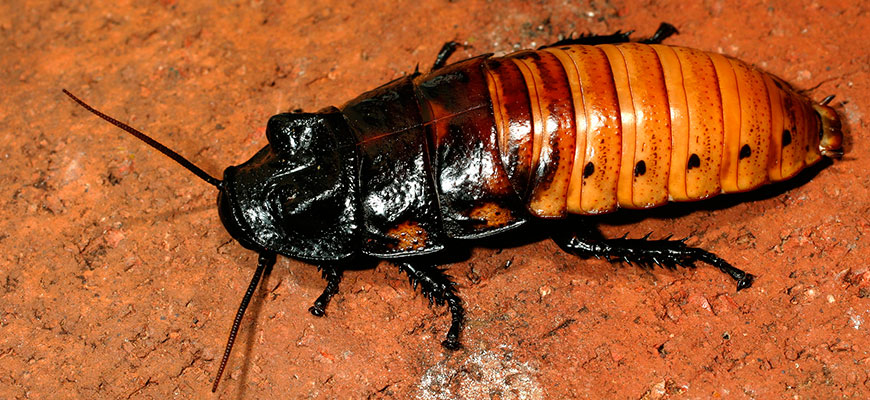
Range: Madagascar
Diet: Detritivore
Size: Up to 2-3 inches
Life Span: Up to 5 years
The Madagascar Hissing Cockroach is one of the larges species of cockroach. Unlike most cockroaches, they are wingless but are excellent climbers even on smooth glass.
They are characterized by their hissing sounds which is produced when it forcefully expels air through their respiratory openings, called spiracles, on the fourth body segment. Madagascar Hissing Cockroaches have three forms of hissing. One is the disturbance hiss, the female-attracting hiss, and the aggressive fighting hiss. Only males will use these last two types of hisses.